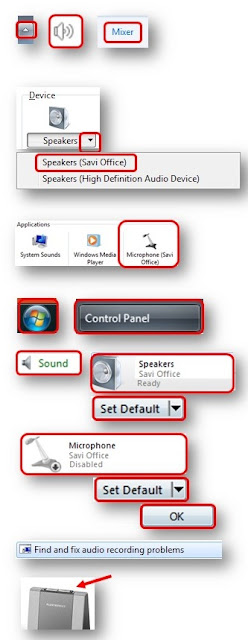Visit the Trainer Lori YouTube channel for free video tutorials!
Back in the days when doctors rode in carriages to visit the sick and being a lady was an important career, little Virginia Fetterer would sit expectantly on the curb in Phoenix's hot sun with a nickel pressed tightly in her palm waiting for the tamale man."Grandmother thought they were trashy," the Arizona native recalls. "She would say, 'Don't you know those are made of cat meat.' I didn't care! They were so good I could eat one every day."
An Arizona native, the 72-year-old recounts an array of vignettes about life in the fledgling state of Arizona. "It wasn't as hot in those days," she recalls. "Less asphalt. We would close the house up, only use the back door and take afternoon naps on the floor where it was cooler."
Her family's Arizona adventure began when her mother trailed her grandmother who was escaping an unhappy marriage. "Grandmother was divorced," she says. "In those days, divorce was a scandal."
They found the Valley of the Sun full of "wealthy tourists" camped in tent cities, renting hard-floored, canvas-roofed cabins with a wood stove, two chairs, rocker and bed, all for $20 a month.
Later, Fetterer's mother met her future husband at a mutual friend's house "way out in the country at 16th Street and Indian School Road." He was a mechanical engineer and, in 1917, installed the first piece of machinery in a copper mine.
He opened what was perhaps the first automobile garage in Phoenix, proudly displaying his 1916 Ford. It took two days for him to drive it from Tucson over the "wagon rut" road. Today the trip takes less than two hours.
Life was serene until the devastating Spanish Flu epidemic swept around the world. Phoenix and the Fetterer family were hit hard. Only four years old, Virginia was left to nurse ill cousins while her father lay dying at a make-shift hospital.
"Mother was not prepared for work. She knew how to hold a teacup, make lace and paint pictures - she was a lady."
Fetterer's mother dabbled at various jobs until a kind and wealthy land owner and one-time legislator asked her to marry him.
"I had two fathers who did so much good in this world," she says fondly. Her new father - like any "respectable" man - took his family out of the city during the hot season. Prescott was their summer home, but the real estate baron "hated with a purple passion" driving the last 35 miles of the winding road every weekend.
To shorten the drive - much to her mother's dismay - he purchased Yarnell Hill which consisted of a cowboy saloon and less than impressive quarters. "My first night there, the ceiling was moving," Fetterer remembers with a shudder. "When I realized the movement was caused by scorpions, I had a hard time getting back to sleep!" In the morning, her mother was met at the back door by a wild hog. She wasted no time moving back to civilization.
Bouts with asthma caused the family to pack young Virginia off to Wickenburg to wait out the pollen season. The tedious drive provided only infrequent points of interest such as the New River bridge.
"I imagined riding a bike over it" and the mirage that looked like a lake.
Later, when her father decided that "every human should have land to aspire to," he bought the property, called it El Mirage, and sold lots to cotton pickers at $10 down, $10 a month. "They would save every penny until they could afford it," she says, adding that many homes were shingled with flattened tin cans.
He also built a town for more affluent laborers and named it after the town in Nebraska where he was born - Surprise.
Noting other changes since she was a girl, Fetterer recalls Phoenix as immaculate ("you could stay clean in a white dress"), the rings in front of buildings for tying up horses, and the roadrunners who would escort buggies to the feed and seed store.
An expansive chinaberry tree shaded their house and provided ample play room. One day, she and a friend schemed to sprinkle drops of water on the next person who walked under the tree. It turned out to be a very proper lady coming to visit her mother.
"When she realized that something, perhaps from a bird, landed on her head, she didn't even look up. She just turned around and marched home to wash her hair. It grew down to her knees and took all afternoon to dry," she says, still embarrassed at the caper.
Pranks notwithstanding, Fetterer's childhood played an important role in Arizona history. As a young student, she heard a visiting ornithologist discuss how this was the only state that didn't have an official state bird. Disturbed by the revelation, she asked him, "What kind would it be?" Because New Mexico had already taken the roadrunner, he supposed the cactus wren would be the logical choice.
The student ran home asking her father for his help in drafting legislation for a state bird. He suggested she implore a neighbor and statesman who kept canaries and was familiar with the proper terminology.
She relayed the document between their two houses until the final version was hammered out. On the day in 1931 when House Bill 128 was introduced, she was in the gallery watching the legislators with their feet on the desks, reading newspapers and generally ignoring the announcements. "I wanted to shake them!" she says. Finally, it was voted on, passed, and she and Arizona bird fanciers cheered.
Fetterer says she does "miss the old days of clean air, when everyone knew each other and there was no television. Phoenix will never be what it was."
I wrote this article in 1987 in Phoenix, Arizona.





